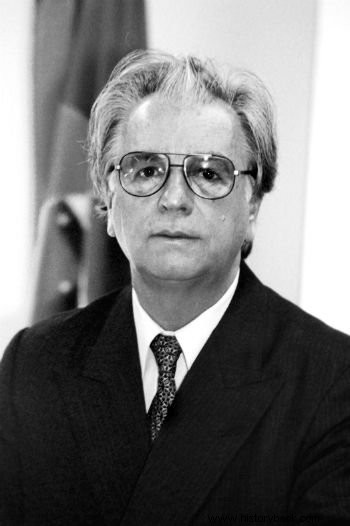Itamar Franco was an engineer, Brazilian politician, mayor of Juiz de Fora, senator, governor of the State of Minas Gerais and the 33rd president of Brazil (1992 and 1994). His legacy includes his participation in the initiative to balance the hyperinflationary crisis that plagued Brazil for three decades, as well as the debt settlement of Minas Gerais when he was governor.
 Itamar Franco was the 33rd president of Brazil
Itamar Franco was the 33rd president of Brazil
Biography
Itamar Augusto Cautiero Franco was born on June 28, 1930, aboard a ship, while his recently widowed mother was traveling from Rio de Janeiro to Salvador. For this reason, the civil registry is in the capital of Bahia.
Son of Augusto César Stiebler Franco and Itália América di Lucca Cautiero, Itamar grew up in Juiz de Fora (MG), where he studied Civil and Electrical Engineering at the School of Engineering of Juiz de Fora.
In 1958, Itamar Franco joins the Brazilian Labor Party (PTB); however, his first political victory would come under the Military Regime, when he joined the Brazilian Democratic Movement (MDB) and was elected mayor of Juiz de Fora in 1967, reelected in 1972. He resigned in 1975, to run for (and win) ) to the Federal Senate for Minas Gerais.
In 1976 and 1977, he was elected vice-leader of the MDB party, but, with the multi-party system reinstated in 1980, Itamar joined the Brazilian Democratic Movement Party (PMDB), being elected senator in 1982.
In 1986, Itamar Franco joined the Liberal Party (PL), where he remained until 1988, when he joined the PRN and the governor of Alagoas, Fernando Collor de Mello, with whom he launched a successful candidacy for the Presidency of Brazil.
Itamar Franco's government
On March 15, 1990, Collor was elected President and Itamar Franco was elected vice president. The team takes over the government in the midst of an economic recession, with high unemployment rates and very high inflation. Inflation reached 1100% in 1992, when Itamar returned to the PMDB and publicly criticized Collor. Subsequently, allegations of corruption led to the President's impeachment.
With that, Itamar Augusto Cautiero Franco assumed the presidency of the Republic in October 1992, with broad party support to carry out broad reforms. Thus, in April 1993, he convenes the plebiscite for the selection of the system of government in Brazil, according to which the Republic (66%) Presidential (55%) was chosen.
The economic reform came with the appointment of Fernando Henrique Cardoso to the Ministry of Finance. He led the team of experts that drew up the Economic Stabilization Plan, which began on March 1, 1994, when the real unit of value (URV) was launched to contain inflation and pave the way for the implementation of the new currency, the Real (R$). The plan was so successful that it secured Fernando Henrique's presidential election in October of that year.
Between 1995 and 1996 he was Brazilian ambassador to Portugal. Two years later, he was elected Governor of Minas Gerais (1998) by the PMDB. In 2002 he will again be appointed Brazilian ambassador, this time in Italy.
In 2007, Itamar assumes the presidency of the Board of Directors of Banco de Desenvolvimento de Minas Gerais. In 2009, he changes parties again, this time the Popular Socialist Party (PPS), for which he is elected senator for the state of Minas Gerais again, in 2010.
His death came soon after, when he was diagnosed with leukemia and passed away on July 2, 2011, from a stroke. His body was cremated and the ashes deposited in his family's tomb in Juiz de Fora.
To learn more:Plano Real.
